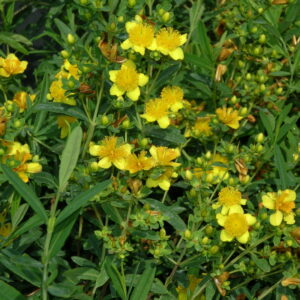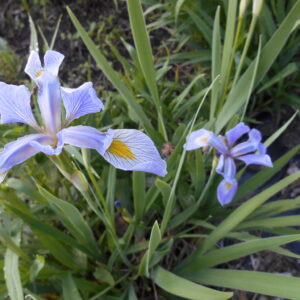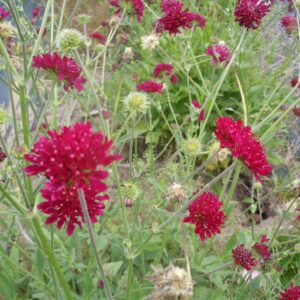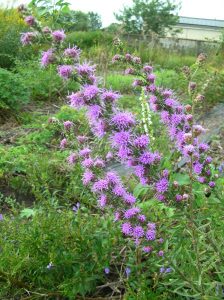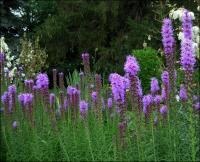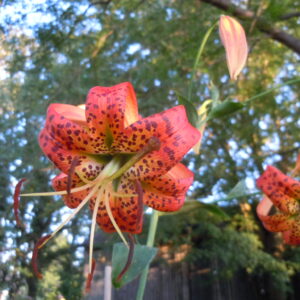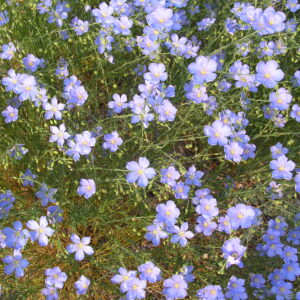Wisconsin Native
Showing 57–64 of 107 results
-
Hypericum kalmianum Kalm’s St. Johns wort SHRUB Z 4-7
Eye-catching yellow saucers with a puff of showy prominent stamens in mid to late summer complimenting the glaucous blue leaves on this mounding, easy- to-grow, shrub.
Eye-catching yellow saucers with a puff of showy prominent stamens in mid to late summer complimenting the glaucous blue leaves on this mounding, easy- to-grow, shrub.
Size: 3-4’ x 3-4’
Care: sun to shade in well-drained to moist well-drained soil. Blooms on new growth so prune in late winter to early spring as far back as you wish.
Native: Quebec to WI, S. to IL, Wisconsin native.
Wildlife Value: attracts bees and butterflies
Awards: Great Plants for Great PlainsThe name Hypericum comes from Greek hyper, meaning above, and eikon, meaning icon or image. The yellow flowers of some species were placed above images to ward off evil spirits, and according to legend, Satan pierced the leaves in revenge. This species collected by and named for Peter Kalm (1716-1779), Swedish plant hunter, on his expedition in North America, 1747-1751. Offered for sale in Bartram Garden’s 1783 Broadside, America’s 1st plant catalog. David Douglas (Douglas fir guy) also collected this at Niagara Falls per British botanist William Jackson Hooker (1785-1865).
**LISTED AS OUT OF STOCK BECAUSE WE DO NOT SHIP THIS ITEM. IT IS AVAILABLE FOR PURCHASE AT OUR RETAIL LOCATION.
-
Iris versicolor Blue flag Z 3-9
Purple, lavender or blue flowers in June
Purple, lavender or blue flowers in June
Size: 36" x 12"
Care: sun, moist to moist well-drained soil
Native: Eastern United States, Wisconsin nativeIris is named after the Greek goddess who accompanied the souls of women to the Elysian Fields by way of the rainbow. Her footprints left flowers the colors of the rainbow. Iris means the eye of heaven. Omaha Indians used the roots topically to cure earaches. Other tribes applied a poultice to cure sores and bruises. Root is poisonous. Cultivated in gardens since the 1700’s.
-
Knautia macedonica syn. Scabiosa rumelica Pincushion plant Z 5-9
Claret pincushions float at the tips of airy wands all summer & fall
Claret pincushions float at the tips of airy wands all summer & fall
Size: 2- 3’ x 10”
Care: sun in well-drained soil. Keep compact by cutting back to 10” in spring, if you wish
Native: Central Europe
Wildlife Value: attracts butterflies and beesKnautia named for German doctor & botanist Christoph Knaut (1656-1716) who published a method of classifying plants. Collected before 1879
-
Liatris aspera Rough blazing star Z 4-9
Feathery purple buttons along tall spikes August-October
OUT OF STOCK
Feathery purple buttons along tall spike in late summer: August-October
Size: 24”-30” x 12”-18”
Care: Sun in well-drained soil
Native: So. Canada, much of eastern 3/4th of U.S., Wisconsin Native
Wildlife Value: attract butterflies (favorite nectar for Monarchs and Buckeyes) & hummingbirds.Aspera is Latin meaning rough. 1st collected by Frenchman André Michaux (1746-1802) who spent 11 years in America collecting hundreds of new plants.
-
Liatris spicata Blazing star, Gayfeather, Button snakeroot Z 3-8
Rosy purple spikes in July and August, a flower arranger’s dream
Rosy purple spikes in July and August, a flower arranger’s dream
Size: 2-3' x 18"
Care: Full sun in moist to well-drained soil.
Native: Eastern and southern U. S., Wisconsin native
Wildlife Value: favorite nectar source for Buckeye butterflies & host for caterpillars of Painted lady, Fritillaries, Skippers, Sulphurs, Coppers & Checkerspot butterflies.Native Americans used roots medicinally for backaches, colic, dropsy and to strengthen a weak heart. The Dakota recognized L. spicata as an indication “when the flower is blue-red that corn is good to eat.” Nicollet Diary, August 13, 1838. The dried root reputedly repelled moths from stored clothes. First collected by English naturalist Mark Catesby (1683-1749) and cultivated since 1732. Grown at America’s 1st botanic garden, Elgin Botanic Garden 1811.
-
Lilium michiganense Michigan lily Z 4-8
The top of each erect stem curves over like a hook. A single red or orange flower dangles from the stem’s tip. Spotted petals (botanically called tepals) curve up with their tips nearly reaching the top of the flower. Stamens hang down from the center then flare out inviting bees and butterflies to its pollen. They flower for nearly a month in mid-summer.
OUT OF STOCK
The top of each erect stem curves over like a hook. A single red or orange flower dangles from the stem’s tip. Spotted petals (botanically called tepals) curve up with their tips nearly reaching the top of the flower. Stamens hang down from the center then flare out inviting bees and butterflies to its pollen. They flower for nearly a month in mid-summer.
Size: 2-5’ x 8-10”
Care: sun to part-shade in moist to moist well-drained, neutral to acidic soil.
Native: New Hampshire west to Wisconsin, south to Arkansas, east to Alabama and Florida
Wildlife Value: attracts hummingbirds, bees, and butterfliesThis had several prior names, as varieties or subspecies of Lilium canadense or Lilium speciosum. In 1915 botanist Oliver Atkins Farwell (1867-1944) renamed it in “Notes of Michigan Liliaceae,” Bulletin of Torrey Botanical Club 42, p. 353, based on one he collected in 1910 in Wiard’s Crossing, Michigan.
-
Lilium superbum Meadow lily Z 4-8
Brilliant orange with purple spots, Turks’-cap type, reflexed petals (tepals), blooming in late summer to early fall.
Brilliant orange with purple spots, turks-cap lily with dramatic, swept-back petals blooming late summer to early fall. Slow to mature but when it does it bears up to 40 flowers on one plant.
Size: 10’ x 12”
Care: Sun in moist to moist-well-drained, acidic soil
Native: from VT to Fl & west to Mississippi River, Wisconsin nativeLilium was named for the Greek word for smooth, polished referring to its leaves. This collected before 1665. In his 1665 book, Flora, seu de Florum Cultura John Rea, nurseryman and author, called it the “Virginia Martagon.” Sold in America’s 1st plant catalog, Bartram’s Broadside, 1783. L.H. Bailey (1913): “The most magnificent and showy of native North American species, well worthy of extensive cultivation.”
-
Linum perenne ‘Lewisii’ Perennial flax, Prairie flax Z 4-8
Sky blue flowers closing by afternoon all summer
Sky blue flowers closing by afternoon all summer
Size: 18" x 12"
Care: Full sun in well-drained soil.
Native: Wisconsin west and southLimonium is Greek meaning “meadow” and latifolium means “wide leaf”. This was identified by Dioscorides in De Materica Medica for medicinal use around 70 A.D. Cultivated in gardens since 1700’s. Formerly used to repel moths and cure canker sores.

